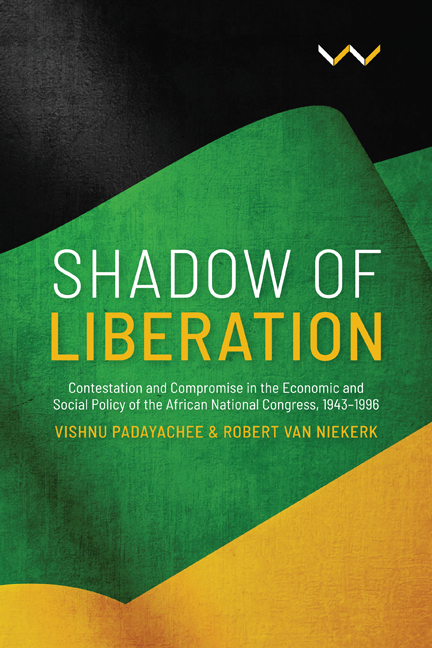 Shadow of Liberation
Shadow of Liberation Book contents
- Frontmatter
- Contents
- Acronyms and abbreviations
- Preface
- Acknowledgements
- Chapter 1 The Context of Economic and Social Policy-Making in the ANC
- Chapter 2 African Claims, the Freedom Charter and Social Democracy, 1943–1960
- Chapter 3 Incarceration, Exile and Homecoming, c.1960–c.1991
- Chapter 4 Economic Policy Debates during a Decade of Liberation, 1985–1993
- Chapter 5 On the Way to GEAR, 1994–1996
- Chapter 6 Making Sense of the Economic Policy Debates
- Chapter 7 South African Reserve Bank Independence
- Chapter 8 The Politics of Health Policy-Making in the Transition Era, 1990–1996
- Chapter 9 Interpretation and Conclusion
- Notes
- Bibliography
- Index
Chapter 1 - The Context of Economic and Social Policy-Making in the ANC
Published online by Cambridge University Press: 20 January 2022
- Frontmatter
- Contents
- Acronyms and abbreviations
- Preface
- Acknowledgements
- Chapter 1 The Context of Economic and Social Policy-Making in the ANC
- Chapter 2 African Claims, the Freedom Charter and Social Democracy, 1943–1960
- Chapter 3 Incarceration, Exile and Homecoming, c.1960–c.1991
- Chapter 4 Economic Policy Debates during a Decade of Liberation, 1985–1993
- Chapter 5 On the Way to GEAR, 1994–1996
- Chapter 6 Making Sense of the Economic Policy Debates
- Chapter 7 South African Reserve Bank Independence
- Chapter 8 The Politics of Health Policy-Making in the Transition Era, 1990–1996
- Chapter 9 Interpretation and Conclusion
- Notes
- Bibliography
- Index
Summary
Talks about the transition to democracy in South Africa began fitfully and largely in secret in the mid-1980s. But President FW de Klerk's announcement on 2 February 1990 that the apartheid regime was unbanning the African National Congress (ANC) and other liberation movements, and the release of Nelson Mandela nine days later, took the transition onto a much higher plane and at a rapid rate. That South Africa remained the only fully capitalist economy on the continent at that time is not in doubt. While we do not subscribe to the notion of ‘South African exceptionalism’, we maintain that its capitalism was an extreme, stunted and distorted one. All of these characteristics, in different ways, had a bearing on the very nature of the transition, including on economic and social policy options and choices. Two such features are worth noting here. Firstly, South African capital represented by white-owned conglomerates such as Anglo American Corporation and Sanlam, both established around the end of the Second World War, remained powerful, globally connected and influential as the twentieth century wound to a close. Secondly, the apartheid regime's economic institutions remained well-resourced and internationally connected, despite decades of sanctions and the crisis of the apartheid state. These state institutions included the Ministry of Finance, the South African Reserve Bank, the Central Economic Advisory Services, a number of regional, national and provincial development finance institutions, and the national statistics agency (Central Statistical Services).
The real power among the constituencies engaged in negotiations lay in the hands of white business and in the institutions of the late apartheid state, as journalist and author Martin Plaut argues: ‘The men who had run South Africa for decades also embarked on a process designed to incorporate senior members of the ANC. Radical economic policies were dropped in favour of more conventional macro-economic prescriptions’ (2012: 31). As Plaut suggests, this was no accident; it had been thought through by the old regime and it was to prove decisive in many economic policy battles, including, as we show, the crucial issue of the independence of the South African Reserve Bank (see chapter 6).
- Type
- Chapter
- Information
- Shadow of LiberationContestation and Compromise in the Economic and Social Policy of the African National Congress, 1943–1996, pp. 1 - 8Publisher: Wits University PressPrint publication year: 2019
